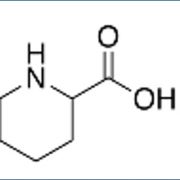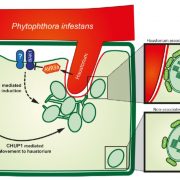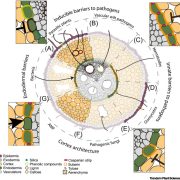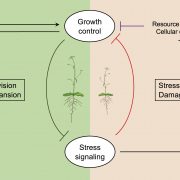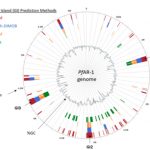Exploring the hydraulic failure hypothesis of esca leaf symptom formation (Plant Phys)
 Esca is a leaf scorch (necrosis) disease of grapevine that causes tremendous yield losses. Bortolami et al. have investigated the etiology of this condition, which is known to be a consequence of fungal pathogen infection. But how exactly does the fungal infection contribute to the observed symptoms? One hypothesis is that the leaf tissues die due to vascular obstruction such as air embolisms, and another is that the cellular death arises from a fungal toxin. A big challenge to understanding this disease is that it only appears in mature vines in the field, and cannot be reproduced by inoculating young vines or in the lab. Therefore, the authors brought symptomatic vines into the lab to study them. Using X-ray micro-computed tomography (microCT), they searched for air embolisms, and they used PCR to investigate where the pathogen was present. They found that the symptoms are not a consequence of gaseous embolisms, although tylose occlusions (outgrowths on parenchyma cells of xylem vessels) are sometimes present. The pathogen appears to be largely occurring in more basal parts of the vine than where the symptoms arise. The authors propose that a toxin or elicitor may travel to the leaf tissues through the transpiration stream, and induce vascular occlusion. (Summary by Mary Williams) Plant Physiol. 10.1104/pp.19.00591 (Image from Wikimedia commons)
Esca is a leaf scorch (necrosis) disease of grapevine that causes tremendous yield losses. Bortolami et al. have investigated the etiology of this condition, which is known to be a consequence of fungal pathogen infection. But how exactly does the fungal infection contribute to the observed symptoms? One hypothesis is that the leaf tissues die due to vascular obstruction such as air embolisms, and another is that the cellular death arises from a fungal toxin. A big challenge to understanding this disease is that it only appears in mature vines in the field, and cannot be reproduced by inoculating young vines or in the lab. Therefore, the authors brought symptomatic vines into the lab to study them. Using X-ray micro-computed tomography (microCT), they searched for air embolisms, and they used PCR to investigate where the pathogen was present. They found that the symptoms are not a consequence of gaseous embolisms, although tylose occlusions (outgrowths on parenchyma cells of xylem vessels) are sometimes present. The pathogen appears to be largely occurring in more basal parts of the vine than where the symptoms arise. The authors propose that a toxin or elicitor may travel to the leaf tissues through the transpiration stream, and induce vascular occlusion. (Summary by Mary Williams) Plant Physiol. 10.1104/pp.19.00591 (Image from Wikimedia commons)


